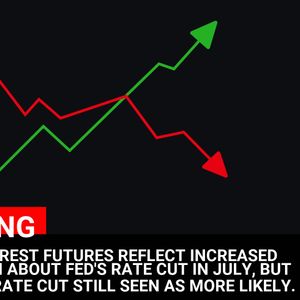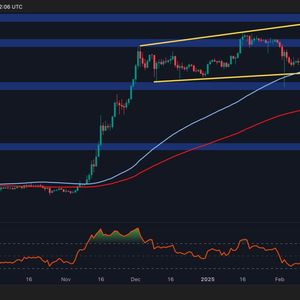The world of cryptocurrency is buzzing with a fresh wave of optimism, especially around stablecoins. Why? Because a key figure in the U.S. financial landscape, Federal Reserve Governor Christopher Waller, has just voiced a remarkably progressive view. He’s suggesting that both traditional banks and innovative non-bank entities should get the green light to issue stablecoins. This isn’t just another comment; it’s a potential game-changer for the future of digital payments and the broader crypto ecosystem. Let’s dive into what this groundbreaking stance means for you and the future of finance. Understanding the Significance of Stablecoins and Crypto Regulation Before we get into the specifics of Governor Waller’s statement, let’s quickly recap what stablecoins are and why they are generating so much buzz. In the volatile world of cryptocurrencies, stablecoins are designed to be the anchors. Unlike Bitcoin or Ethereum, which can experience wild price swings, stablecoins are pegged to a stable reserve asset, most commonly the U.S. dollar. This peg aims to provide price stability, making them more suitable for everyday transactions and as a bridge between traditional finance and the crypto world. Here’s a quick rundown of why stablecoins are important: Stability in Crypto Markets: They offer a safe haven during market volatility. Traders often move their funds into stablecoins to protect against downturns. Efficient Transactions: Stablecoins can facilitate faster and cheaper transactions compared to traditional banking systems, especially for cross-border payments. Gateway to DeFi: They are the backbone of many Decentralized Finance (DeFi) applications, enabling lending, borrowing, and yield farming. Potential for Retail Payments: With their stability, they hold the promise of becoming a mainstream digital payment method for everyday consumers. However, the lack of clear crypto regulation around stablecoins has been a major hurdle. Concerns about consumer protection, money laundering, and systemic risk have led to regulatory uncertainty, hindering wider adoption. This is where Governor Waller’s statement becomes particularly noteworthy. US Fed Governor’s Bold Vision: Banks and Non-Banks in the Stablecoin Arena Speaking at a conference in San Francisco, Governor Waller articulated a forward-thinking perspective on stablecoins. He emphasized that both banks and non-banks should be allowed to issue regulated stablecoins. This is a significant endorsement, especially coming from a high-ranking official at the U.S. Federal Reserve. According to a Cointelegraph report, Waller believes that stablecoins are a “significant innovation” with the potential to revolutionize retail and cross-border payments. Waller stressed the need for a clear U.S. regulatory and supervisory framework. He stated that this framework should: Address Stablecoin Risks Directly: Regulations should specifically target the risks associated with stablecoins, such as reserve management and operational resilience. Be Comprehensive and Full: The framework needs to be thorough, covering all critical aspects of stablecoin operations to ensure stability and consumer protection. Be Narrowly Focused: Regulations should be tailored to stablecoins, avoiding unnecessary burdens on other areas of the crypto market. By advocating for both banks and non-banks to participate, Waller is signaling a move towards a more inclusive and innovative approach to crypto regulation . This stance could pave the way for a more dynamic and competitive stablecoin market, benefiting both consumers and the financial industry. Why Allow Both Banks and Non-Banks? Exploring the Benefits Why is it important to allow both banks and non-banks to issue stablecoins? Let’s break down the key advantages: Fostering Innovation: Non-banks, often nimble and tech-focused, are at the forefront of crypto innovation. Allowing them to issue stablecoins encourages continued creativity and development in the space. Enhancing Competition: Opening the door to both banks and non-banks fosters healthy competition. This can lead to better services, lower fees, and more innovative stablecoin products for consumers. Leveraging Strengths of Both Sectors: Banks bring established regulatory compliance, robust infrastructure, and trust. Non-banks bring agility, technological expertise, and a deep understanding of the crypto ecosystem. Combining these strengths can create a more resilient and efficient stablecoin market. Expanding Financial Inclusion: Stablecoins have the potential to reach underserved populations and improve financial inclusion. Non-banks, with their innovative approaches, can play a crucial role in extending financial services to those outside the traditional banking system. Imagine a future where you can seamlessly send money across borders using a stablecoin issued by your favorite tech company, or earn interest on a stablecoin held in a traditional bank account. This is the potential that Governor Waller’s vision unlocks. Navigating the Challenges: Addressing Risks and Ensuring Robust Frameworks While the prospect of regulated stablecoins issued by both banks and non-banks is exciting, it’s crucial to acknowledge the challenges and risks involved. A robust crypto regulation framework is essential to mitigate these concerns and ensure the stability of the financial system. Some key challenges include: Operational Risks: Stablecoin issuers need to ensure the security and reliability of their technology and operations. This includes safeguarding against cyberattacks and ensuring smooth transaction processing. Reserve Management: Maintaining the peg to the reserve asset is critical. Regulations must ensure that stablecoin issuers hold sufficient and high-quality reserves to back their stablecoins at all times. Transparency in reserve holdings is also paramount. Systemic Risk: If stablecoins become widely adopted, their failure could pose a systemic risk to the broader financial system. Regulations need to address this potential risk, possibly through capital requirements and supervisory oversight. Anti-Money Laundering (AML) and Combating the Financing of Terrorism (CFT): Stablecoins must comply with AML and CFT regulations to prevent illicit activities. Robust KYC (Know Your Customer) and transaction monitoring systems are necessary. Consumer Protection: Users need to be protected from fraud, scams, and misleading information. Clear disclosure requirements and dispute resolution mechanisms are essential. Developing a regulatory framework that effectively addresses these challenges while fostering innovation is a delicate balancing act. However, Governor Waller’s statement suggests that the Fed is committed to finding this balance and creating a conducive environment for stablecoin development. The Future is Stable: Revolutionizing Payments with Regulated Stablecoins? Governor Waller’s endorsement of allowing both banks and non-banks to issue stablecoins marks a potentially transformative moment for the cryptocurrency industry. It signals a growing recognition among regulators of the potential benefits of stablecoins and a willingness to create a regulatory pathway for their responsible development. If implemented effectively, this approach could unleash a wave of innovation in digital payments and reshape the financial landscape. Imagine: Faster, cheaper, and more accessible cross-border payments. Seamless integration of crypto into everyday financial transactions. New financial products and services powered by stablecoins. Increased adoption of digital currencies by both consumers and businesses. The path forward requires careful consideration and collaboration between regulators, banks, non-banks, and the crypto industry. But the direction is clear: regulated stablecoins are poised to play a significant role in the future of finance, and the U.S. Fed seems ready to embrace this revolution. In conclusion, Governor Waller’s statement is a **powerful** endorsement for the future of stablecoins. By advocating for a regulatory framework that includes both banks and non-banks, he’s not just acknowledging the innovation; he’s actively paving the way for a more inclusive, efficient, and technologically advanced financial ecosystem. This is a development worth watching closely, as it could redefine how we think about and use money in the digital age. To learn more about the latest crypto regulation trends, explore our article on key developments shaping crypto policy landscape.












